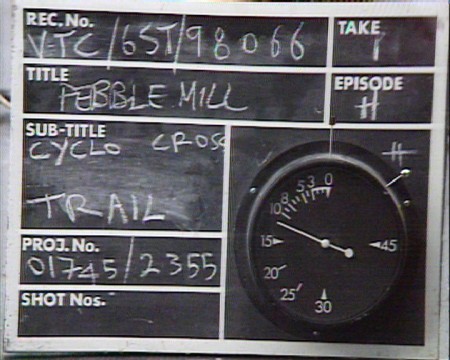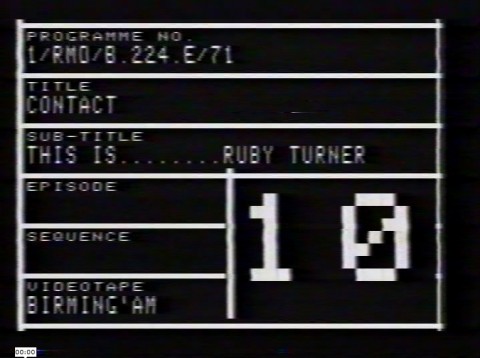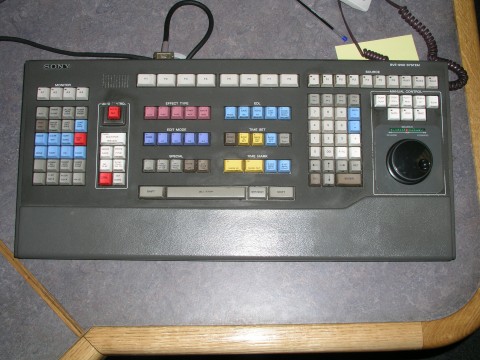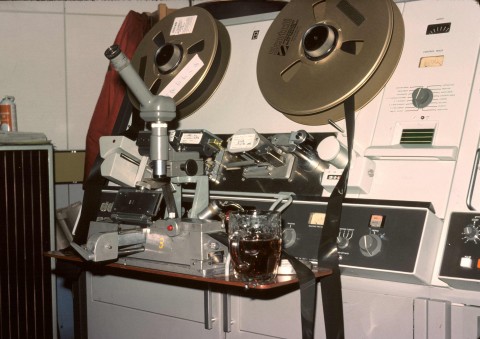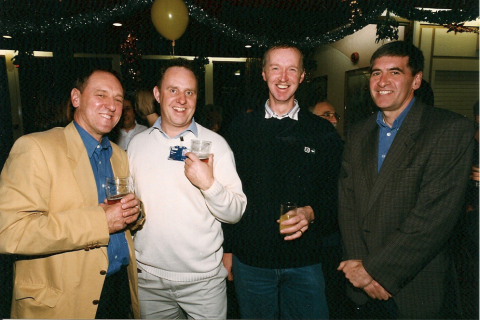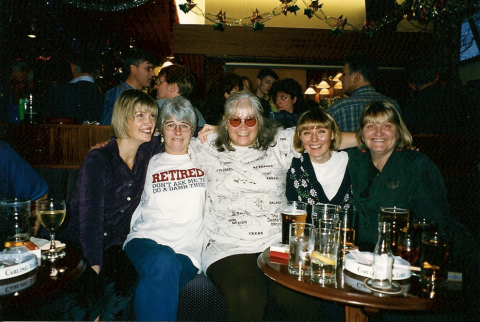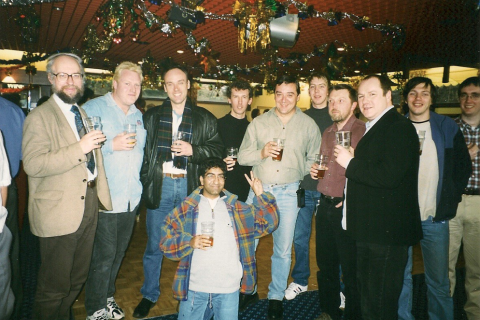Still from Ian Collins, no reproduction without permission.
VT Clock
The countdown clock was initially a mechanical clock on a kind of blackboard in the studio, and was recorded at the beginning of each section of recording. It had sections for the programme title, tape number, take number, sequence title and other important identifying information. This was written on by the floor manager, (or assistant FM) prior to the recording. One of the difficulties was that when a tape was edited, the clock information could not be updated in VT to indicate this was an edited master, unless a separate clock had been recorded previously. The clock was generally started at around 30 seconds and allowed to count past 0, although in shows recorded as live the vision mixer would cut to black at 3. Where a series of clocks for editing purposes were recorded, the cut to black would be done in the edit by VT.
In the late 70’s Peter Wood-Fisher, a keen engineer built an electronic VT Countdown clock using a large quantity of integrated circuits, and housed it in a home made plywood box. It was around 18inch square with a full size keyboard at the front, then an up-stand housing the rest of the electronics, on which there was just room for a pair of 9inch monitors. This allowed VT to add clocks to edited items and recorded inserts without tying up studio time. This was the forerunner of using the BBC Micro as a VT Clock, which only became possible in the mid 80’s. (the BBC Model A was first produced in 1984). In those early days studio recordings often still recorded the clock from the studio, but the VT clock was used for subsequent edits. As there was only one VT Clock, various routing arrangements were made in order to make it available to the other VT areas. It sat on the back shelf in VTA cubicle.
Ray Lee
The following comments were left on the Pebble Mill Facebook group:
Peter Poole: “BBC Norwich still used these VT clocks long after Pebble Mill changed to electronic. I went on attachment as a Tech Op. The studio looked like a museum of broadcast equipment!”
Eurwyn Jones: “Just read the article on the Pebble Mill site. I remember the clock well – on live shows like ‘Farming Today’ on Sunday mornings,the clock was used at the end of the show as well. It faced the presenter in the studio and on cue from the PA counting down to the end on the show we would start the clock and they would see how long they had left. Some would ignore it though!!”
Peter Poole: “Pebble Mill engineers had a great talent for building ingenious electronics.”
Ned Abell: “Its ironic this surfaced the day after Ceefax closed…now wheres my BBC B from September 1982?”
